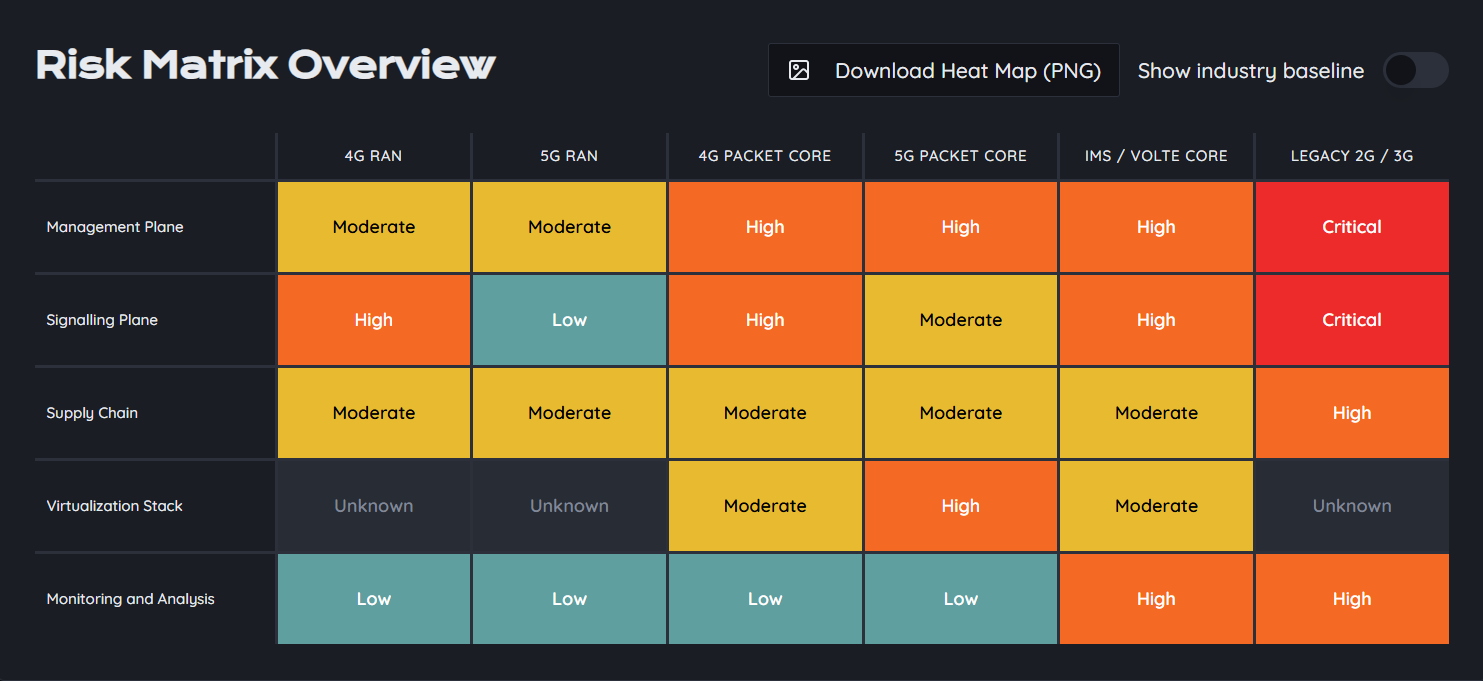Introduction: What Is UDM in 5G?
As 5G deployments accelerate worldwide, telecom operators are transitioning to a cloud-native core network architecture. At the heart of this transformation is UDM—Unified Data Management, the brain of subscriber identity and policy handling in 5G.
UDM replaces traditional subscriber data systems like the HSS (Home Subscriber Server) and brings centralized identity, profile, and authentication management to the new Service-Based Architecture (SBA) used in 5G core networks.
In this article, we break down what UDM is, how it functions, what makes it a prime attack target, and what operators must do to protect it.
UDM’s Core Role in 5G Networks
Unified Data Management is the network function responsible for subscriber identity management and access authorization in the 5G Core.
Every time a mobile device connects to a 5G network—whether for a voice call, video stream, or IoT data exchange—it first interacts with the UDM to verify the user’s identity and retrieve the necessary profile data.
UDM enables:
- Authentication of users via 5G-AKA (through the AUSF)
- Access policy enforcement via PCF (Policy Control Function)
- Session continuity and mobility profile management
- Roaming rights and subscription limitations
- Storage and retrieval of subscription data through UDR (Unified Data Repository)
UDM is responsible for generating authentication vectors, resolving subscriber identifiers, and coordinating access rights for every session a subscriber initiates.
From HSS to UDM: Why This Evolution Matters
In 4G LTE networks, subscriber data was managed by the HSS, but it was tightly coupled to specific services and interfaces. With 5G, UDM introduces a decoupled, service-based model that enhances scalability, flexibility, and security—if implemented properly.
UDM no longer stores persistent data directly. Instead, it accesses a separate backend storage system called the UDR (Unified Data Repository). This separation allows for better redundancy, faster scaling, and reduced single points of failure.
This cloud-native shift means telecom operators must now secure both the control logic (UDM) and the storage layer (UDR) independently.
What Kind of Data Does UDM Manage?
The UDM handles highly sensitive and security-critical information, including:
- SUPI (Subscription Permanent Identifier), the 5G version of the IMSI
- SUCI (Subscription Concealed Identifier), a privacy-protecting encrypted version of the SUPI
- Authentication vectors used during subscriber registration
- Access and mobility profiles, including session timeouts and location data
- Service-level access rights, roaming permissions, and usage quotas
If an attacker gains unauthorized access to UDM, they could extract this data and use it for identity theft, impersonation, surveillance, or fraud.
UDM Architecture: Service-Based Interfaces and Network Functions
As part of the 5G Service-Based Architecture, UDM exposes its functions through RESTful APIs. These are not simple HTTP endpoints—they’re critical control-plane interfaces defined in 3GPP specifications.
Key API-based interfaces used by UDM include:
nudm-authentication: Used by AUSF to verify subscriber credentialsnudm-subscriberdata: Used by AMF and PCF to retrieve user profile and policy datanudm-uecontext: Stores user equipment context and session statenudm-event-exposure: Allows other functions to subscribe to changes in subscriber data
Because all these interfaces are IP-based and potentially cloud-hosted, they become high-value targets for attackers looking to exploit API weaknesses, misconfigurations, or identity leaks.
UDM Security Risks in 5G Networks
1. Unauthorized Access to Subscriber Data
If API authentication or TLS encryption is not properly implemented, malicious actors can query UDM directly to extract sensitive subscriber data, including SUPI and policy info.
2. Signaling Abuse and Denial of Service
Attackers can flood UDM with authentication or profile requests, potentially causing service degradation. This is particularly dangerous during high-traffic events or for mission-critical applications like emergency services.
3. Exploiting Inter-NF Trust
In poorly secured deployments, other network functions like AMF or PCF may be trusted implicitly. If any of these are compromised, they could be used to launch lateral attacks on UDM.
4. Improper UDR Access Controls
If the Unified Data Repository is improperly segmented, an attacker reaching UDM could also retrieve long-term stored data—such as location history, roaming usage, or SIM provisioning records.
How to Secure UDM in a 5G Environment
Securing UDM is not a checkbox—it requires a layered approach combining protocol hardening, real-time monitoring, and architectural best practices.
✅ Enforce Mutual TLS for All SBI Connections
All Service-Based Interfaces must use mutual TLS with strict certificate validation. This ensures only authorized 5G network functions can communicate with UDM.
✅ Apply API Authentication and Rate Limiting
Every request to a UDM interface should be authenticated using OAuth2 tokens or similar mechanisms. Rate limiting and behavioral analysis should detect anomalies.
✅ Monitor UDM Traffic with Telecom-Aware Intrusion Detection
Generic firewalls are not enough. Operators should use telecom-specific intrusion detection systems, like P1 Telecom Monitor (PTM), to analyze signaling traffic across 5G APIs and detect protocol-level abuse.
✅ Conduct Regular Security Testing and Red Teaming
Operators should simulate attacks on UDM’s APIs and logic, including broken access control, improper privilege escalation, or injection-style flaws in subscription data queries.
✅ Segment UDM and UDR at the Network and Identity Layer
Even if UDM is compromised, proper network segmentation and role-based access should prevent attackers from reaching persistent subscriber data in UDR.
Regulatory Implications for UDM Exposure
Because UDM manages subscriber identity and personal data, it is under heavy scrutiny from both telecom regulators and data protection agencies.
- Under GDPR, subscriber identifiers like SUPI and SUCI are considered personal data. Any breach involving UDM could trigger mandatory disclosures and fines.
- NIS2 and EECC regulations in the EU require operators to implement strict access control, monitoring, and reporting capabilities across all critical network functions—including UDM.
- Telecom-specific standards from ETSI and GSMA highlight UDM as a critical function requiring strong cybersecurity enforcement.
Failure to secure UDM is not just a technical flaw—it’s a compliance violation with reputational and financial consequences.
Final Thoughts: UDM Is the New Security Perimeter for 5G Identity
As mobile networks become more dynamic, subscriber data becomes more valuable—and more vulnerable. UDM is no longer just a backend database—it’s a front-line identity system, and one that attackers are increasingly targeting in their campaigns.
For telecom operators, securing UDM is not just a best practice—it is essential to maintaining trust, service integrity, and compliance. Identity infrastructure is now the battlefield, and Unified Data Management is in the crosshairs.
🔐 Looking for the full picture? Explore the Ultimate Guide to Mobile Network Security — your complete resource on telecom security, from architecture to audits.




